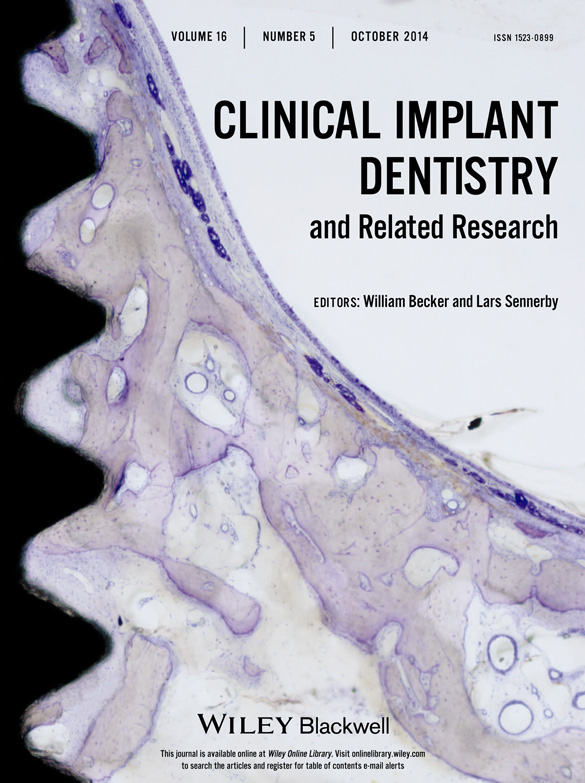Osteonecrosis of the Jaw after Implant Surgery in Patients Treated with Bisphosphonates – A Presentation of Six Consecutive Cases
Abstract
Background
Osteonecrosis of the jaws in patients treated with bisphosphonates is mostly associated with intravenous bisphosphonates while the incidence associated with oral bisphosphonates is not significant.
Purpose
The purpose of this paper is to describe a series of cases of jaw osteonecrosis that may be associated with dental implant placement in patients who had taken nitrogen containing bisphosphonates via oral and/or intravenous route.
Patients
Six female patients were treated for osteonecrosis of the jaw after implant placement. An average age was 71.8 ± 6.5 years old and they had a history of bisphosphonate use. Two patients suffered from cancer and the other patients had osteoporosis. Two osteoporosis patients had taken only oral bisphosphonate and the other patients received intravenous bisphosphonates.
Results
Resection of necrotized bone, implant removal, and primary closure were performed in five patients and four patients showed uneventful healing. One patient presented recurrence at the maxilla and underwent further extraction and resection. One patient presented with an exposure of the bone after implant placement was treated with an advanced flap closure, and the implants were preserved.
Conclusion
Unusual jaw necrosis after dental implant surgery might be related with oral and/or intravenous bisphosphonates. Wide resection of necrotic bone, collagen graft, and primary closure are key factors for successful healing.




